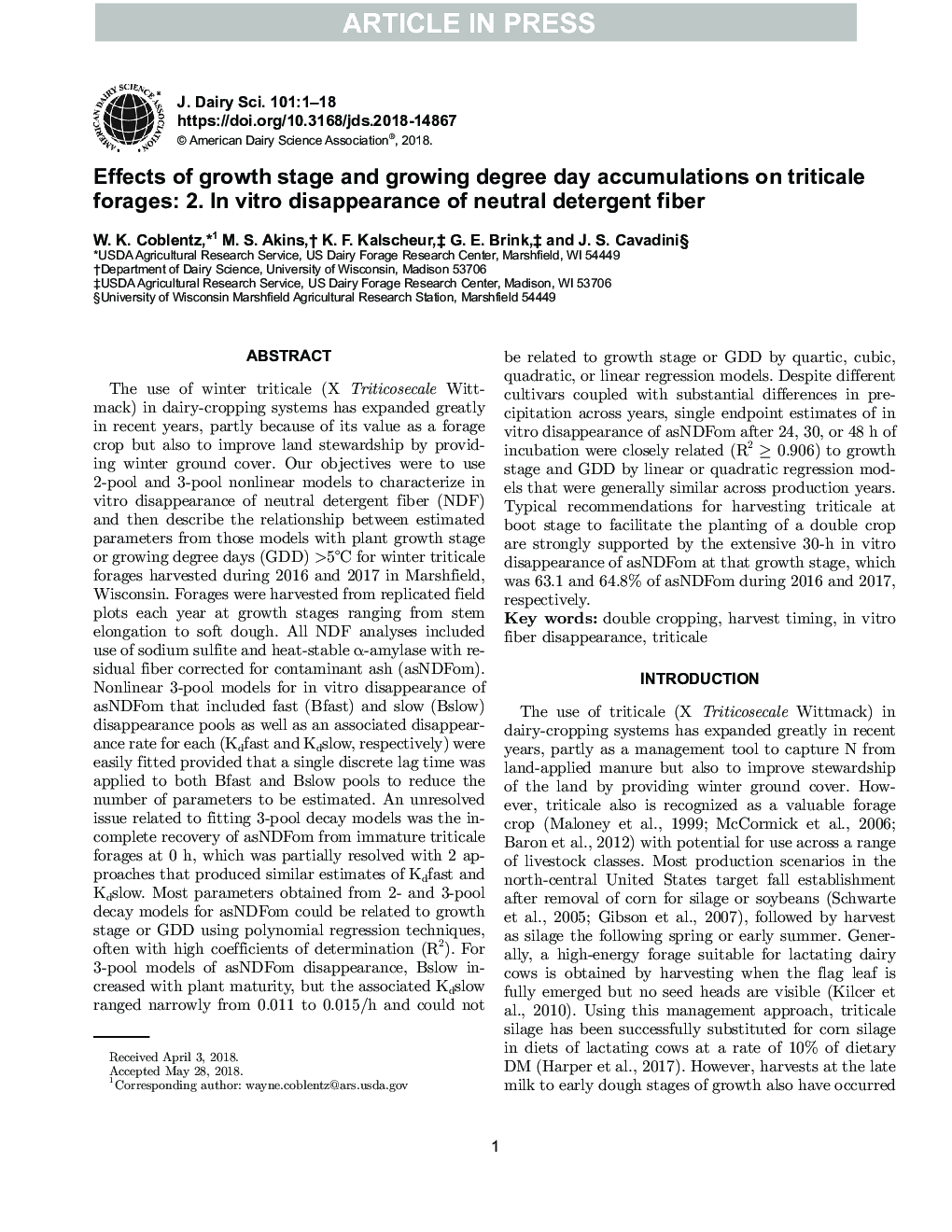| Article ID | Journal | Published Year | Pages | File Type |
|---|---|---|---|---|
| 10158064 | Journal of Dairy Science | 2018 | 18 Pages |
Abstract
The use of winter triticale (X Triticosecale Wittmack) in dairy-cropping systems has expanded greatly in recent years, partly because of its value as a forage crop but also to improve land stewardship by providing winter ground cover. Our objectives were to use 2-pool and 3-pool nonlinear models to characterize in vitro disappearance of neutral detergent fiber (NDF) and then describe the relationship between estimated parameters from those models with plant growth stage or growing degree days (GDD) >5°C for winter triticale forages harvested during 2016 and 2017 in Marshfield, Wisconsin. Forages were harvested from replicated field plots each year at growth stages ranging from stem elongation to soft dough. All NDF analyses included use of sodium sulfite and heat-stable α-amylase with residual fiber corrected for contaminant ash (asNDFom). Nonlinear 3-pool models for in vitro disappearance of asNDFom that included fast (Bfast) and slow (Bslow) disappearance pools as well as an associated disappearance rate for each (Kdfast and Kdslow, respectively) were easily fitted provided that a single discrete lag time was applied to both Bfast and Bslow pools to reduce the number of parameters to be estimated. An unresolved issue related to fitting 3-pool decay models was the incomplete recovery of asNDFom from immature triticale forages at 0 h, which was partially resolved with 2 approaches that produced similar estimates of Kdfast and Kdslow. Most parameters obtained from 2- and 3-pool decay models for asNDFom could be related to growth stage or GDD using polynomial regression techniques, often with high coefficients of determination (R2). For 3-pool models of asNDFom disappearance, Bslow increased with plant maturity, but the associated Kdslow ranged narrowly from 0.011 to 0.015/h and could not be related to growth stage or GDD by quartic, cubic, quadratic, or linear regression models. Despite different cultivars coupled with substantial differences in precipitation across years, single endpoint estimates of in vitro disappearance of asNDFom after 24, 30, or 48 h of incubation were closely related (R2 ⥠0.906) to growth stage and GDD by linear or quadratic regression models that were generally similar across production years. Typical recommendations for harvesting triticale at boot stage to facilitate the planting of a double crop are strongly supported by the extensive 30-h in vitro disappearance of asNDFom at that growth stage, which was 63.1 and 64.8% of asNDFom during 2016 and 2017, respectively.
Related Topics
Life Sciences
Agricultural and Biological Sciences
Animal Science and Zoology
Authors
W.K. Coblentz, M.S. Akins, K.F. Kalscheur, G.E. Brink, J.S. Cavadini,
